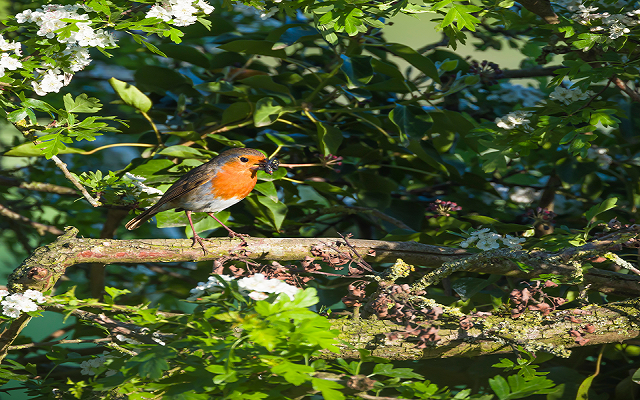Land Business Update | Week Commencing 18th November
Welcome to our update on key land management, farming, planning and energy issues.
Farming
Arable yields above five-year average, according to our Harvest 2019 Yield Survey
Yields were higher in 2019 for all the main crops, with the average winter wheat yield at 9.9t/ha, which is 17% higher than in 2018 and 7% higher than the five-year average. Winter barley also performed better than in 2018 with yields 14% higher at 8.8t/ha. Spring barley yields were up 23% on 2018 levels and 9% above the five-year average. Winter oilseed rape averaged 3.4t/ha which is only 1% higher than in 2018 and 1% higher than the five-year average, with cabbage steam flea beetle (CSFB) infestations and a dry spring both impacting on yields. The survey covers 110,600 hectares, spread over 137 farms mainly located in the East of England, Midlands and South East England. Please contact Tom Fitzgerald in our farming team for further details.
Scottish Government proposes legislation to maintain current CAP schemes to around 2025
The government says the Agriculture (Retained EU Law and Data) (Scotland) Bill would give it time to make amendments to the schemes so they work as well as possible and also to pilot potential new approaches to rural support. The Scottish Parliament’s Rural Economy and Connectivity committee has issued a public call for evidence on the legislation, with the deadline being Friday 3 January 2020. If the Bill is passed, it makes it important that we keep an eye on proposals for reforming the CAP after 2020. The latest news is that a ‘common percentage’ of each Member State’s overall CAP envelope (which is 1st & 2nd Pillar) should be allocated to environmental and climate purposes. Farm ministers from the Member States broadly supported this proposal but the Commission has reservations, as it fears it could lower environmental ambitions. There will be more detail after the overall budget for 2021 – 2027 has been agreed, which is expected next year. There is also likely to be a transition period, between the current CAP programme and the new one; this is likely to be 1 or 2 years but is still to be decided.
Forestry
What trees to plant to protect financial returns in response to weather, pest & climate change risks
Making returns from woodland and forestry in the UK is a long-term business and there are new risks that can affect financial returns from woodland. We have produced a new briefing note on how we, as woodland managers, can establish and manage woodland that will meet owners’ financial objectives by being more resilient to the effects of climate change and the risks from pests and diseases. This will include changing what we plant and how we manage it. This is particularly important if, as is recommended by the Committee on Climate Change, the area of woodland in the UK needs to almost double to absorb and store carbon. Please contact Jon Lambert, senior director of John Clegg & Co, our forestry team.
Key performance indicators are not happy reading in England
The Forestry Commission in England has published the latest performance against its key performance indicators. There are now 19 forest pests of the highest priority, an increase of two since 2018 and up from 14 five years ago. The percentage of woodland that is actively managed increased slightly to 59%, but has plateaued at around this level for above five years. This will be a challenge for the Forestry Commission as woods that are managed are better at storing carbon and are better for wildlife. The rate of new tree planting remains well below the national targets; in our opinion, this is at least partially due to the lengthy and complicated process of getting permission to plant trees. The trend for tree planting that is supported through the Countryside Stewardship scheme has been downwards over the last decade – precisely the opposite of what is needed.
Property
Getting houses ready for winter
Occupants and property managers should considered the following to make sure that homes and properties are as ready for winter as possible:
- Boilers are serviced and chimney flues are swept.
- Pipes (including in the loft), outside taps and header tanks are insulated.
- Everyone knows where the stop tap is and that it works, and who to contact if a pipe bursts or contractors are needed.
- Heating is kept on a low setting at all times to keep the property warm, avoid condensation and actually save energy.
- Have a torch or candles to hand in case of power cuts.
- Inspect trees as branches can break due to snow loads.
- Clear gutters ready for heavy rain and thawing snow.
We recommend that landlords talk to their tenants about these simple actions that can prevent incidents and also make houses nicer to live during the winter. Please contact Dave Bates, in our building surveying team about seasonal property maintenance.
Capital Allowances for structures and buildings
A new(ish) relief is available (from 29th October 2018) for expenditure on new structures and buildings intended for commercial use, and the improvement of existing structures and buildings, including the cost of converting or renovating existing premises to qualifying use. Relief is limited to the original cost of construction or renovation and given across a fixed 50-year period, at an annual flat rate of 2% regardless of changes in ownership. Please contact Jonathan Smith, our Director of Tax, for further details.
Proposed Fair Rents (Scotland) Bill
The consultation on this Bill closed on 8th August and a response from the Scottish Government is expected after the general election. It aims to protect private sector tenants by introducing measures to limit rent increases and to increase the availability of information about rent levels. One of the factors underlying the Bill is that the number of children in private rented housing living in severe poverty has more than doubled in a decade, to 50,000.
Rural economy
Rural Tourism Infrastructure Fund opens for another round of applications
£3m is available to help tourist attractions and their communities deal with the impact of increased visitor numbers on the local infrastructure by helping with improvements such as parking areas, visitor facilities and recycling points. It is funded by the Scottish Government and administered by VisitScotland.
Telecoms
New Electronic Communication Code is creating more litigation than the old Code
There have now been some 77 Upper Tribunal references and 11 hearings (of which 6 reported and 2 already appealed) under the new Electronic Communication Code whereas there was virtually no litigation under the old Code. These cases have covered the rents now being offered by mobile network operators, access rights to existing sites, and the relationship between the new Code and the Landlord and Tenant Act 1954. A number of the cases are significant and far-reaching, particularly CTIL –v- Compton Beauchamp Estates Ltd and CTIL –v- Ashloch Ltd & AP Wireless UK Limited. They concern the effectiveness of notices served under Paragraph 20 of the new Code. We are still waiting for a substantive ruling on the valuation implications of paragraph 24 of the Code. This sector has become much more complicated and litigious than in the past. If you would like to discuss masts, fibre or BT wayleaves or anything else to do with the new Code, please contact Ian Thornton Kemsley, in our specialist telecoms team.






